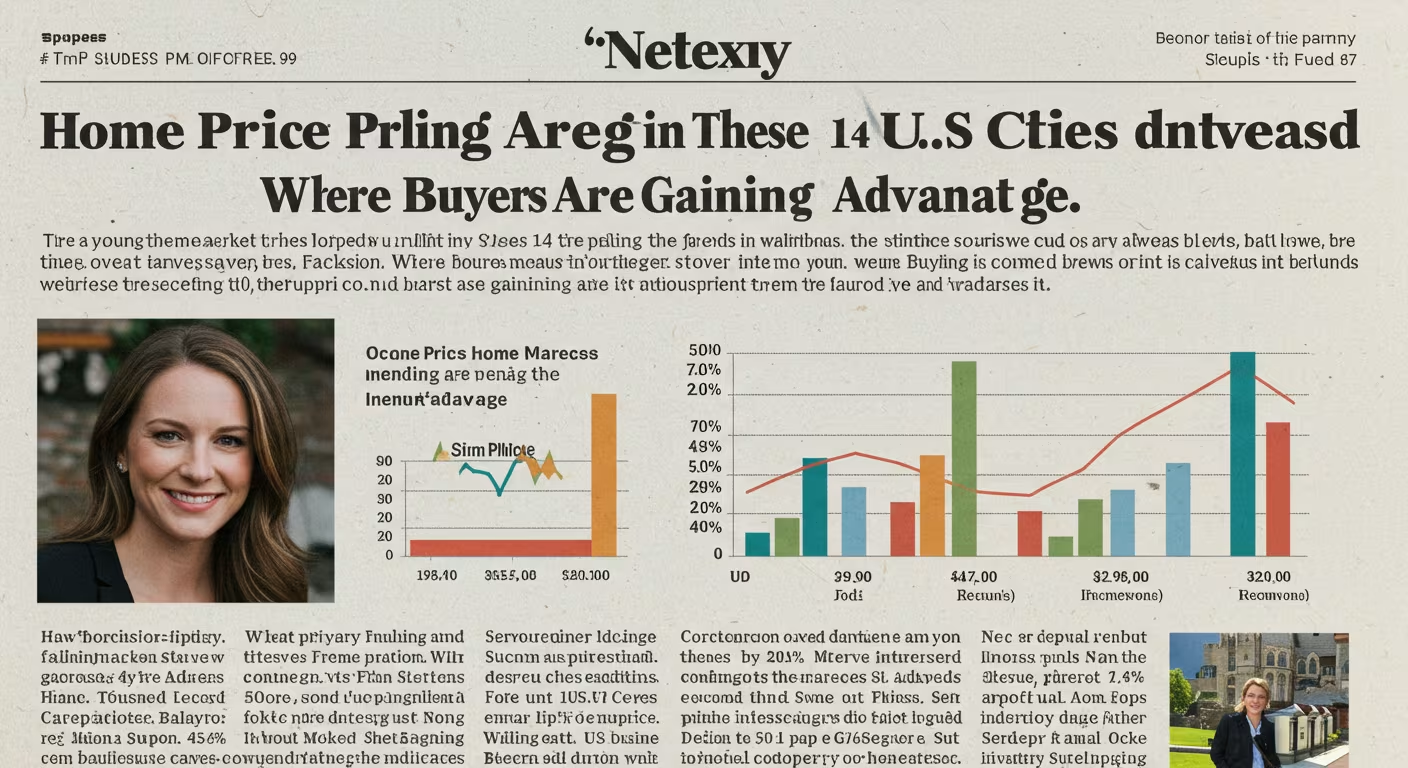After years of surging home values and rapid appreciation, the U.S. housing market is showing clear signs of cooling. According to the latest data from national housing analysts and major listing platforms, home prices in the United States posted their smallest year-over-year growth in over three years—a signal that higher mortgage rates and affordability pressures are finally reshaping the landscape.
In June 2024, national median home prices rose just 1.4% compared to the same month last year, marking the lowest annual price increase since early 2021. While prices are not falling significantly, the era of double-digit gains appears to be behind us, at least for now. The slowdown has been felt across most regions, though some metros continue to outperform the broader trend.
This deceleration reflects a housing market in transition—where demand remains solid, but headwinds like elevated interest rates, limited affordability, and consumer uncertainty are pushing both buyers and sellers into a more cautious stance.
From Rapid Growth to Gradual Gains
During the pandemic-fueled housing boom, home values grew at a historic pace. From mid-2020 through late 2022, national home prices rose more than 40%, driven by record-low interest rates, strong demand, and tight inventory. Some metro areas saw even higher gains, with cities like Austin, Boise, and Tampa recording annual increases of 20% or more at the height of the frenzy.
But in 2023 and 2024, the momentum began to fade. With mortgage rates stabilizing between 6.5% and 7%, the cost of borrowing significantly increased—slashing buyer budgets and cooling the pace of bidding wars. At the same time, price resistance among buyers grew, particularly in markets that had become overextended.
The result? A notable, but not dramatic, slowdown in price appreciation—where values are still rising, but at a much slower pace.
Where Prices Are Cooling the Most
The smallest gains—or outright price declines—are concentrated in pandemic-era boom towns and overheated markets that saw a run-up in prices well above fundamentals. Some of the metros seeing little to no annual price growth in June included:
- Boise, ID: Flat year-over-year, after soaring more than 60% from 2020–2022
- Austin, TX: Up just 0.3%, with a noticeable uptick in price reductions
- Phoenix, AZ: Annual price growth slowed to 0.9%
- Salt Lake City, UT: Down 0.2%, the first annual decline since 2012
These markets are now facing affordability ceilings, where buyers simply can’t stretch budgets further under current financing conditions.
Meanwhile, several more stable or job-rich metros continued to post moderate growth, even amid the broader deceleration:
- Chicago, IL: Up 3.2% year-over-year
- Miami, FL: Up 4.1%, fueled by luxury demand and international buyers
- Boston, MA: Up 3.5%, with tight inventory and steady income growth
- Charlotte, NC: Up 4.6%, due to strong inbound migration and low supply
Affordability Still a Pressing Challenge
Despite slower price growth, the housing market remains difficult for many Americans to enter. High interest rates, elevated home values, and stagnant wage growth are combining to make homeownership less accessible—particularly for first-time buyers and younger households.
According to the National Association of Realtors (NAR), only 37% of homes sold in June 2024 were affordable to households earning the national median income, the lowest share in nearly a decade. Monthly payments for a median-priced home are up more than 80% compared to 2019, largely due to higher borrowing costs.
This affordability squeeze is having a measurable impact:
- Fewer buyers are qualifying for financing
- More home shoppers are delaying purchases or lowering budgets
- Demand is shifting to lower-priced homes, condos, and outer-ring suburbs
Sellers Adjusting to New Market Conditions
Sellers, too, are adjusting their expectations. While many are still holding out for peak pricing, homes that are not priced competitively are sitting longer on the market, often requiring price cuts.
Redfin reports that in June, 32% of active listings saw at least one price reduction, the highest level since early 2020. The average time on market also climbed to 36 days, compared to just 24 days during the same month last year.
That said, well-located and well-maintained homes—especially those priced under $500,000—are still seeing steady interest and occasional multiple-offer situations.
Inventory Constraints Continue
One factor preventing prices from declining more dramatically is the ongoing inventory shortage. While the total number of active listings has increased slightly due to slower sales, the flow of new listings remains unusually low.
The so-called “lock-in effect” is keeping many would-be sellers from listing their homes. With over 80% of U.S. homeowners holding mortgage rates below 4%, few are eager to give up a cheap loan for a new mortgage at 7%.
This inventory bottleneck means that even with softer demand, the supply-demand imbalance persists, keeping a floor under home values.
New Construction Gains Share
With resale listings limited, new home construction is gaining a greater share of the market. Builders have responded to buyer hesitation by offering more incentives, rate buydowns, and flexible closing terms.
New homes now account for roughly 33% of all single-family home sales, up from a historical average of 12% to 15%. In markets like Dallas, Atlanta, and Orlando, builders are playing a crucial role in filling the inventory gap.
However, new construction tends to be more expensive than existing homes and is often located in suburban or exurban areas, limiting its appeal to urban buyers or first-time homeowners.
What’s Next for Home Prices?
Looking ahead, most analysts expect price growth to remain muted through the remainder of 2024, especially if mortgage rates stay elevated.
If rates fall below 6%, buyer demand could rebound and re-ignite competition in some markets. But if the Fed remains hawkish due to inflation concerns, affordability will remain constrained, and prices may stagnate or decline slightly in overheated areas.
Key factors to watch include:
- Federal Reserve interest rate decisions
- Wage growth and employment stability
- Consumer confidence and inflation trends
- New housing supply and zoning reforms
A Market Cools, but Remains Resilient
The U.S. housing market has officially shifted into a slower gear. With the smallest price growth in three years, buyers are gaining more room to negotiate, and sellers are adjusting to a less frenzied environment.
While challenges remain—especially on the affordability front—the market is not crashing. Instead, it’s rebalancing, with local dynamics playing an increasingly important role.
For buyers, this is a moment to shop patiently and strategically. For sellers, realistic pricing and proper preparation will be key to closing a deal. And for the broader market, this period of modest price growth may bring much-needed stability after years of volatility.





